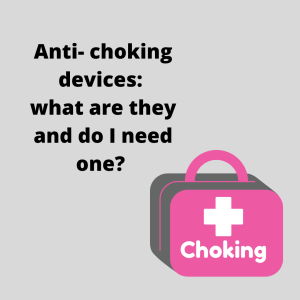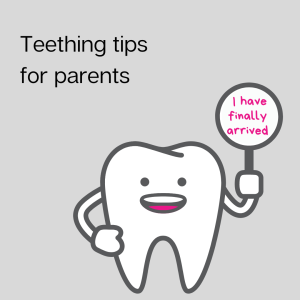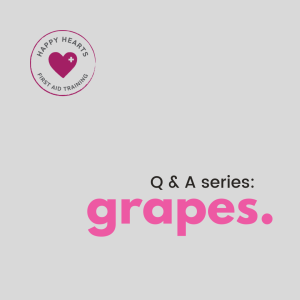Wow, these kids of ours can really keep us on our toes!
Is your baby a breath-holder? Have they turned blue or pale and held their breath for up to 30- 60 seconds? What a scary thing to have witnessed as a parent. But you are in the right place- I am going to give you all the information you need about breath- holding episodes so that you feel informed and empowered about these nasty things.
But before I go into the facts about breath- holding episodes, there are two really important pieces of information that you need to know. Firstly, breath- holding episodes are not harmful, and pose no long-term risks. (Ahhhhh…. big sigh of relief.) Secondly, this is not something that your child has done on purpose. It has been completely out of their control.
So what is breath-holding?
As the name so cleverly lets on, this is an episode where the baby or child holds their breath. They can turn either blue (more common) or pale. They may hold their breath for up to one minute, before starting to breathe again. Occasionally, the breath-holding may lead to an episode of syncope (fancy word for fainting).
Importantly, a breath- holding episode occurs because of an emotional or physical trigger- they have been crying and are very upset, they are in pain, they are angry or really scared.
The facts about breath- holding:
- About 5% of babies and children experience breath- holding episodes
- Although scary to witness, they are not harmful
- They usually start at the age of 6 months or so, and they stop by the time the child is 4-5 years old.
- They could be related to iron deficiency anaemia, especially if the child has limited variation in their diet
Treatment for breath- holding:
- Stay calm, reassure the child.
- Stay with the child.
- As soon as the child begins the episode, you can try to blow air into the child’s face. (There isn’t a great deal of research to support this, but it has been documented that it can help some children. It is not an invasive measure, and might help, so probably worth a try!)
- Lie the casualty on their side (this will help to increase blood flow to the head, and the floor is the safest place for a casualty to be)
- If you can, record the length of the episode. Even better- capture it on a video recording on your smart phone. This can be really helpful to medical professionals in getting a diagnosis. (Plus… we all know that time essentially stops when something frightening happens to our little ones. This way you will have an accurate record of the length of the episode).
Always try to revisit and remember the events leading up to the episode. Was the baby
really crying? Had they just had a fright? There will be a trigger. Next time a similar
event occurs- you could try to distract them before they have another breath- holding
episode.
Things NOT to do during a breath- holding episode:
1. Don’t splash them with water
2. Don’t put anything in their mouth
3. Don’t tell them off. Remember this response was out of their control.
When to get help/ see the GP:
1. Calll 999 if normal breathing does not return within 60 seconds or
the casualty experiences a seizure.
2. If things get worse, or the episodes become more frequent, see your GP.
So, remember, this episode has happened as a response to an emotional or physical trigger, and should resolve itself. Stay calm, place them on the floor and get medical help if required.
This information does not replace medical advice, and we advocate for all parents to attend a first aid session so they are equipped with the necessary skills in case of an emergency.
References:
NHS Breath- holding in babies and children. Accessed here: https://www.nhs.uk/conditions/breath-holding-in-babies-and-children/
Breath- holding spells in infants (Goldman, 2015). Canadian Family Physician, 61 (2), 149-150
Child Neurology Foundation- breath holding spells. Accessed here: https://www.childneurologyfoundation.org/disorder/breath-holding-spells/



